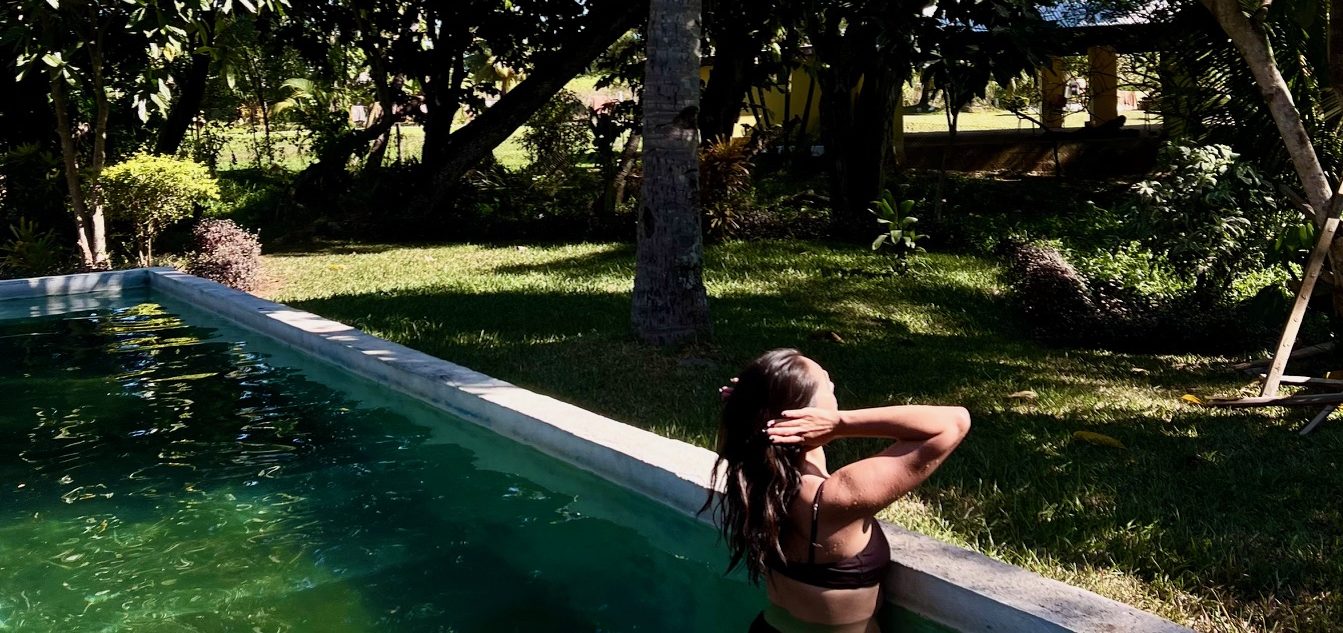The Malibu Mansion Abandoned by Kanye West Is Hitting the Market Again
The seller, Steven ‘Bo’ Belmont, is asking $39 million for the under-construction project.
In September 2024, crowdfunding entrepreneur Steven “Bo” Belmont paid $21 million for a Tadao Ando-designed house in Malibu, Calif., that rapper Kanye West had purchased, gutted and abandoned, promising to restore it back to its original state.
Now, with the renovation in full swing, Belmont is putting the beachfront property back on the market for $39 million. If he doesn’t find an appealing offer, he’ll list the property for between $55 million and $65 million closer to completion, he said.
Belmont is continuing with construction, and expects the project to be done in early 2026. But he would make as much money for his investors selling now versus when the project is finished, since the carrying costs on the property are about $1 million a month.
And he is eager to sell quickly. “The minute I start going over a year of hold time, it lowers my average return on investment,” he said. “And my number one goal with my business is to take care of my investors.”
Belmont has received several unsolicited offers for the four-bedroom home over the last few months, including a $30 million overture from a Montana developer and a $28 million offer from a local builder. “I’m obviously not going to take that,” he said, “but there’s been a lot of activity.”
The roughly 4,000-square-foot house was designed more than decade ago by Ando, a Pritzker Prize-winning Japanese architect with a celebrity following, for financier Richard Sachs. West, who now goes by Ye, paid $57.3 million to buy it from Sachs in 2021, then gutted the house with plans to turn it into a beachfront bunker, according to a lawsuit from one of his contractors.
As he proceeded with the project, West made headlines for erratic behavior and antisemitic comments, and brands such as Gap and Adidas cut ties with him. He listed the property for $53 million in December 2023.
When Belmont bought it, the house had no windows, bathrooms or electricity, and was completely exposed to wind and sea spray from the Pacific Ocean. To fund the restoration, Belmont’s crowdfunding company, Belwood Investments, raised millions from investors who chipped in as little as $1,000 to north of $1 million.
Since then, he has done all the framing, installed new plumbing and electrical systems and redone the roof, he said. The glass for the windows hasn’t yet arrived from Germany; it is expected to be installed by the end of the summer, according to Belmont. He estimated the total cost of the project, which is being overseen by architecture firm Marmol Radziner, at around $8.5 million.
Buying early would allow the new owner to make some aesthetic decisions about the home, said Jason Oppenheim of the Oppenheim Group, one of the listing agents. “This house is like a Picasso,” he said. “This is almost like allowing the buyer to pick the frame.”
Malibu Road, where the property is located, wasn’t impacted by the L.A. wildfires earlier this year, but parts of the larger Malibu area were wiped out. Buyers right now are nervous about insurance and the pace of rebuilding, Belmont said, but he still expects long-term demand for Malibu homes. He noted that the hulking concrete structure would be impossible to burn.
The fires were “a horrible thing,” Belmont said, “but to be quite frank, there’s no inventory to buy on the Pacific Coast Highway, so it really bolstered our value.”
Belmont is eager to distance the Ando home from its association with West. “What I don’t want is that type of reckless publicity to be correlated with this piece of art,” he said. “It doesn’t need that type of stigma. It needs to be really showcased for what it truly is—an Ando.”
Ando has famously designed only a few residences for select clients. Beyoncé and Jay-Z paid $190 million in 2023 for a Malibu mansion he designed. Their home is known as the “Big Ando,” compared with Belmont’s “Little Ando.”
Oppenheim stars on the Netflix reality TV show “Selling Sunset,” and episodes for a coming season have been filmed at the house, Belmont said.
Belmont said he has already submitted an offer on another high-profile celebrity home, the property of embattled rapper P. Diddy . He said he submitted an offer of around $30 million for the home, which had been listed for $61.5 million, but it was declined. He has since lowered his offer to $27.5 million.
Belmont started Belwood in 2018. Previously, he served three years in prison after a 2014 conviction for assault with a deadly weapon in connection with allegedly hitting a man with a pitchfork during an altercation.
Oppenheim is co-listing the property with Mauricio Umansky from The Agency.
 Copyright 2020, Dow Jones & Company, Inc. All Rights Reserved Worldwide. LEARN MORE
Copyright 2020, Dow Jones & Company, Inc. All Rights Reserved Worldwide. LEARN MORE
Records keep falling in 2025 as harbourfront, beachfront and blue-chip estates crowd the top of the market.
A divide has opened in the tech job market between those with artificial-intelligence skills and everyone else.
The 2026 McGrath Report warns that without urgent reforms to planning, infrastructure and construction, housing affordability will continue to slip beyond reach for most Australians.
Australia’s housing market has reached a critical juncture, with home ownership and rental affordability deteriorating to their worst levels in decades, according to the McGrath Report 2026.
The annual analysis from real estate entrepreneur John McGrath paints a sobering picture of a nation where even the “lucky country” has run out of luck — or at least, out of homes.
New borrowers are now spending half their household income servicing loans, while renters are devoting one-third of their earnings to rent.
The time needed to save a 20 per cent deposit has stretched beyond ten years, and the home price-to-income ratio has climbed to eight times. “These aren’t just statistics,” McGrath writes. “They represent real people and real pain.”
McGrath argues that the root cause of Australia’s housing crisis is not a shortage of land, but a shortage of accessibility and deliverable stock.
“Over half our population has squeezed into just three cities, creating price pressure and rising density in Sydney, Melbourne and Brisbane while vast developable land sits disconnected from essential infrastructure,” he says.
The report identifies three faltering pillars — supply, affordability and construction viability — as the drivers of instability in the current market.
Developers across the country, McGrath notes, are “unable to make the numbers work” due to labour shortages and soaring construction costs.
In many trades, shortages have doubled or tripled, and build costs have surged by more than 30 per cent, stalling thousands of projects.
Need for systemic reform
McGrath’s prescription is clear: the only real solution lies in increasing supply through systemic reform. “We need to streamline development processes, reduce approval timeframes and provide better infrastructure to free up the options and provide more choice for everyone on where they live,” he says.
The 2026 edition of the report also points to promising trends in policy and innovation. Across several states, governments are prioritising higher-density development near transport hubs and repurposing government-owned land with existing infrastructure.
Build-to-rent models are expanding, and planning reforms are gaining traction. McGrath notes that while these steps are encouraging, they must be accelerated and supported by new construction methods if Australia is to meet demand.
One of the report’s key opportunities lies in prefabrication and modular design. “Prefabricated homes can be completed in 10–12 weeks compared to 18 months for a traditional house, saving time and money for everyone involved,” McGrath says.
The report suggests that modular and 3D-printed housing could play a significant role in addressing shortages while setting a new global benchmark for speed, cost and quality in residential construction.
Intelligent homes
In a section titled Weathering the Future: The Power of Smart Design, the report emphasises that sustainable and intelligent home design is no longer aspirational but essential.
It highlights new technologies that reduce energy use, improve thermal efficiency, and make homes more resilient to climate risks.
“There’s no reason why Australia shouldn’t be a world leader in innovative design and construction — and many reasons why we should be,” McGrath writes.
Despite the challenges, the tone of the 2026 McGrath Report is one of cautious optimism. Demand is expected to stabilise at around 175,000 households per year from 2026, and construction cost growth is finally slowing. Governments are also showing a greater willingness to reform outdated planning frameworks.
McGrath concludes that the path forward requires bold decisions and collaboration between all levels of government and industry.
“Australia has the land, demand and capability,” he says. “What we need now is the will to implement supply-focused solutions that address root causes rather than symptoms.”
“Only then,” he adds, “can we turn the dream of home ownership back into something more than a dream.”
From Italy’s $93,000-a-night villas to a $20,000 Bowral château, a new global ranking showcases the priciest Airbnbs available in 2026.
On October 2, acclaimed chef Dan Arnold will host an exclusive evening, unveiling a Michelin-inspired menu in a rare masterclass of food, storytelling and flavour.
























